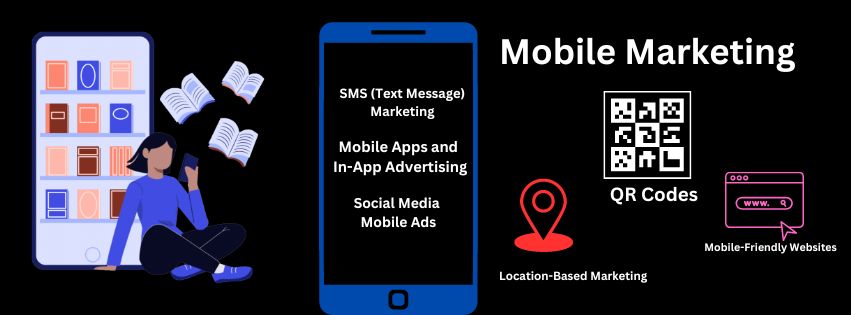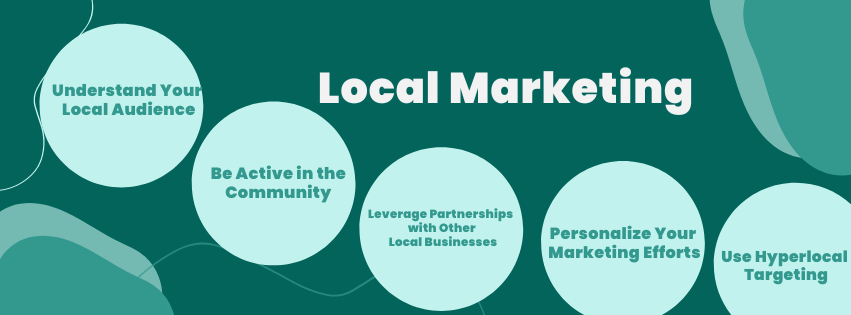Mobile marketing is a multi-channel digital marketing strategy aimed at reaching consumers through their smartphones, tablets, and other mobile devices. As mobile technology has become ubiquitous, mobile marketing allows businesses to connect with users wherever they are and whenever they want, providing a more personalized and immediate brand experience. This marketing strategy includes various tactics such as SMS marketing, mobile apps, mobile-friendly websites, social media ads, and location-based services.
In this blog, we’ll explore what mobile marketing is, its key strategies, benefits, and how to optimize your mobile marketing campaigns.

What is Mobile Marketing?
Mobile marketing refers to any marketing activity that occurs on a mobile device, including smartphones, tablets, and wearables. It encompasses everything from mobile-optimized websites and social media ads to SMS notifications and in-app promotions.
The goal of mobile marketing is to meet consumers where they are spending most of their time—on their mobile devices—and provide them with relevant, timely, and engaging content.
As more people rely on their mobile devices for communication, shopping, entertainment, and information, mobile marketing offers businesses the opportunity to engage consumers in real-time with personalized experiences.
Key Strategies in Mobile Marketing
SMS (Text Message) Marketing
- SMS marketing is one of the oldest and most direct forms of mobile marketing. It involves sending promotional messages, reminders, or special offers via text messages to users who have opted in. Since SMS messages have a high open rate and are read almost immediately, this strategy is effective for time-sensitive offers or urgent notifications.
- Example: A restaurant might send out an SMS to its loyalty program members, offering a 20% discount on their next meal when they show the message at checkout.
Mobile Apps and In-App Advertising
- Developing a mobile app allows businesses to provide a more interactive and personalized experience for their customers. Through in-app advertising, businesses can reach users while they’re actively engaging with an app. Push notifications, personalized offers, and in-app banners are some of the common tactics used to engage users.
- Example: E-commerce platforms like Amazon use push notifications to alert users of upcoming sales, personalized product recommendations, and abandoned cart reminders.
Mobile-Friendly Websites
- With the rise of mobile internet browsing, it’s crucial for businesses to ensure that their websites are optimized for mobile devices.
- A mobile-friendly website adapts to different screen sizes and provides a seamless user experience, which includes fast loading times, easy navigation, and mobile-optimized content.
- Example: Airbnb’s website is fully optimized for mobile, making it easy for users to browse listings, book accommodations, and interact with hosts on their smartphones.
Social Media Mobile Ads
- Social media platforms like Facebook, Instagram, Twitter, and TikTok have become central hubs for mobile marketing.
- Social media ads can be precisely targeted based on user behavior, interests, demographics, and location, allowing businesses to deliver highly relevant ads directly to their audience’s mobile feeds.
- Example: Fashion retailers like Zara use Instagram and Facebook ads to showcase new collections and drive traffic to their online stores, making it easy for users to shop directly from their phones.
Location-Based Marketing
- Also known as geolocation marketing, this strategy uses GPS data from mobile devices to target users with location-specific ads and offers.
- This is especially effective for businesses with physical locations, as they can send push notifications or display ads to users when they are nearby.
- Example: Starbucks uses geofencing to send promotional offers or notifications about nearby stores when a user is close to one of their locations.
QR Codes
- QR codes provide a quick and easy way for users to access digital content by scanning a code with their smartphone camera.
- Businesses can use QR codes in print ads, product packaging, or in-store displays to link customers directly to a website, mobile app, or specific promotion.
- Example: A gym might include a QR code in their promotional materials that links to an exclusive discount on memberships when scanned.
Benefits of Mobile Marketing
- Instant and Direct Communication
- Mobile marketing provides businesses with the ability to instantly reach their audience.
- SMS notifications, push alerts, and social media updates are all received in real-time, ensuring that the message is seen quickly and can drive immediate action.
- Personalization
- Mobile marketing allows businesses to personalize messages and offers based on the user’s location, behavior, and preferences. This increases the relevance of the content and the likelihood that users will engage with it.
- Higher Engagement Rates
- People spend a significant amount of time on their mobile devices, which translates into higher engagement rates for mobile campaigns.
- Whether it’s interacting with social media ads, opening push notifications, or responding to SMS messages, mobile users tend to engage more frequently with mobile content.
- Cost-Effective
- Compared to traditional advertising channels like TV or print, mobile marketing is more affordable and can deliver a higher return on investment (ROI). Channels like SMS marketing or social media ads allow businesses to reach a large audience without requiring a massive budget.
- Increased Customer Loyalty
- Mobile apps, personalized SMS offers, and location-based promotions help create a more loyal customer base by providing users with timely, relevant content and offers.
- Loyalty programs and app-based rewards also keep customers coming back for more.
- Broader Reach
- Mobile marketing can reach a broader and more diverse audience. From teenagers to seniors, everyone uses mobile devices, and businesses can tailor their campaigns to suit different demographics.
Best Practices for Mobile Marketing
- Optimize for Mobile Devices
- Whether it’s your website, email campaigns, or mobile ads, everything should be optimized for mobile screens.
- Ensure that content is responsive, loading times are fast, and navigation is easy to improve the user experience and increase conversion rates.
- Use Clear and Concise Messaging
- Mobile users are often on the go and have limited attention spans, so your messaging needs to be clear, concise, and compelling.
- Make sure your call-to-action (CTA) is easy to find and understand.
- Leverage Personalization
- Take advantage of mobile data to personalize your marketing efforts. Send offers based on user behavior, preferences, or location to increase relevance and engagement.
- Incorporate Social Media
- Social media and mobile marketing go hand in hand.
- Ensure that your mobile marketing strategy includes targeted ads on social platforms, and encourage users to engage with your brand by sharing content or participating in challenges.
- Test and Measure Results
- Continuously test different aspects of your mobile marketing campaigns, from ad copy and images to targeting strategies and offers. Use analytics to measure performance and refine your approach for better results.
- Offer Value to Users
- Mobile users should feel like they’re getting something valuable from your marketing efforts, whether it’s a discount, useful content, or exclusive access to promotions.
- Ensure that your offers and messages align with their interests and needs.
Examples of Successful Campaigns
- Sephora’s Mobile App Loyalty Program
- Sephora has one of the most successful mobile loyalty programs, allowing users to earn rewards points, view personalized product recommendations, and make purchases directly from the app.
- The app also offers in-store features like barcode scanning for product reviews, helping to bridge the gap between mobile and in-store shopping.
- Domino’s Pizza “Order Anywhere” Campaign
- Domino’s made ordering pizza incredibly simple through their mobile app, allowing users to order with a simple tap. They also integrated voice ordering and emoji-based orders, making the process fun, easy, and mobile-friendly. The campaign resulted in a significant increase in mobile orders.
- Nike’s “Just Do It” Push Notifications
- Nike uses push notifications through their mobile app to keep users engaged with the brand.
- The notifications range from product announcements and motivational messages to limited-time offers, encouraging users to interact with the app and make purchases.
- Taco Bell’s Geofencing Strategy
- Taco Bell uses geofencing to send special offers and discounts to customers who are within a certain distance of a Taco Bell location.
- This drives foot traffic and encourages nearby consumers to stop in for a meal.
Conclusion
Mobile marketing is an essential part of any modern marketing strategy.
With mobile devices becoming the primary way people connect, shop, and consume content, businesses must adapt by creating mobile-optimized experiences that engage users on the go.
By leveraging strategies like SMS marketing, and location-based services, businesses can deliver personalized, relevant content that reaches their audience in real-time.
The key to mobile marketing success lies in optimizing for mobile platforms, offering value to users, and using data to create personalized experiences that resonate with your target audience.
For businesses looking to stay competitive in today’s mobile-driven world, embracing mobile marketing is no longer optional—it’s a necessity.





One thought on “Mobile Marketing: The Future of On-The-Go Engagement”